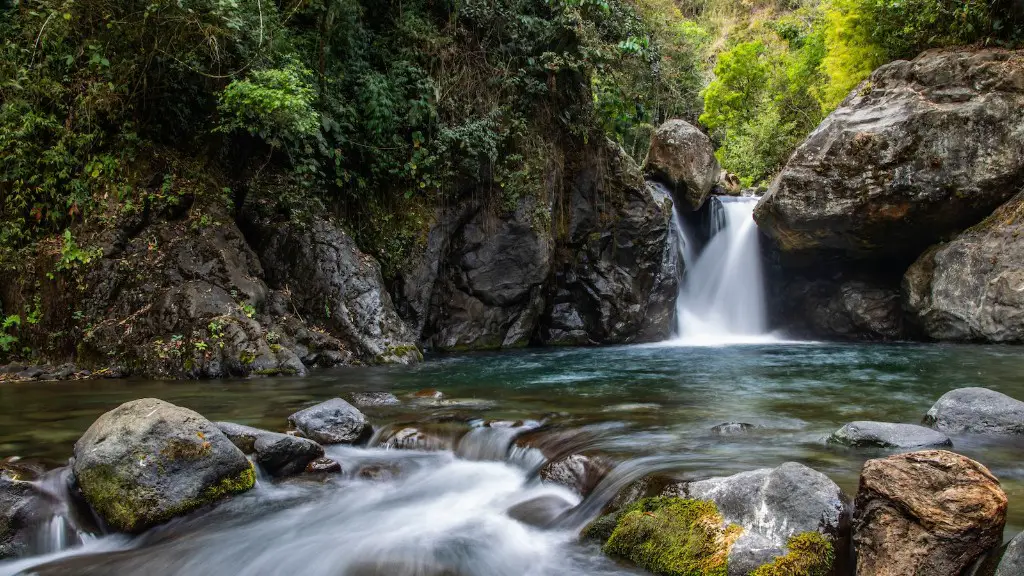Origin of the Mississippi River
The Mississippi River is the second longest river in the United States, and stretches more than 2,300 miles across the center of the country. It is the chief tributary of the Mississippi-Missouri River, which is the fourth largest river system in the world. The origin of the river is in the southwestern part of Lake Itasca, in Minnesota. From there, it flows southward and empties into the Gulf of Mexico. It is an original source of transportation and has been utilized by Native Americans for centuries.
Tidal Influence on the Mississippi River
The Mississippi River is a river of continental proportions, thus it is not influenced directly by tides. However, it can be indirectly affected by certain tidal conditions. The tidal influence on the river only extends from its mouth, located in the Gulf of Mexico, up to around Baton Rouge, Louisiana. Beyond Baton Rouge, the influence of the moon and sun is much smaller due to the river’s width and depth.
Tides in the Gulf of Mexico can produce surge of water into the mouth of the Mississippi River, causing the tides to be higher than normal. The surge of water can be compounded by other environmental factors such as wind and atmospheric pressure, thereby increasing the height of the water level in the basin. This phenomenon is known as a “tidal bore”.
Tidal effects are greatest during the summer months, when the sea level is highest. During this time the river tends to experience more dramatic surges and more frequent flooding, since the higher tides create greater volumes of water.
Areas Most Vulnerable to Tidal Effects
The coastal areas of the Mississippi River Delta are very vulnerable to tidal effects. These include the Atchafalaya Basin, which is located to the southwest of the river’s main channel, and the lower half of the Delta, which is situated along the southernmost coast of Louisiana. These areas are prone to flooding due to the seasonal variations in the sea level and the weaker levee system compared to the northern half of the Delta.
The fresh water from the Mississippi River is also particularly vulnerable to salt water intrusion from the Gulf of Mexico in certain parts of the Delta. This is because the river’s water level has dropped since the 1950s, allowing salt water to move upstream.
The most common signs of tidal influence on the Mississippi River are seen during the highest spring tides of the year, when the water in the gulf rises higher than normal, resulting in flooding and destruction of property along the river’s banks.
Effects of Tides on the Ecosystem
Tides have an important role in the balance of the Mississippi River ecosystem, as they move nutrients such as oxygen and sediment through the river system. The influx of sediment into the delta due to tidal surges can create a range of habitats for aquatic wildlife. Furthermore, the fluctuating salinity levels of the water can impact the growth of marine life.
Tides also provide a natural cycle of sedimentary processes that form, shape, and maintain the Delta. As the incoming tides bring fresh water from the Mississippi into the Delta, they flush away pollutants and sediment from the river. This helps to maintain the health of these fragile ecosystems.
How Tides Can be Managed
The most effective way to manage tidal effects on the Mississippi River system is through engineering and construction of levees and barrier islands. The Federal Emergency Management Agency (FEMA) has been actively building levees throughout the Delta since the 1960s to minimize the effects of tides.
These levees work to stabilize water levels and minimize the amount of water that enters the Delta during high tide. In addition, the levee system helps to protect the area from storm surge and flooding.
Furthermore, the installation of engineered channels can help to divert the flow of water, thus avoiding areas of the Delta that may be particularly vulnerable to high tide flooding.
How Human Activity is Affecting the River
Human activities are also having an impact on the Mississippi River, and the Delta in particular. Industrial development along the river has increased over the decades, resulting in increased sedimentation and pollution. In addition, the extraction of oil and gas from the Delta has reduced the water supply, reducing the ability of the river to rise during spring tides.
It is also believed that the construction of dams along the river has impacted its ability to respond to tides. The use of levees to contain the river water may be reducing the ability of the river to flush pollutants and sediment, thus impacting the health of the river and its ecosystems.
Alternate Power Sources
The Mississippi River has potential to provide an alternative source of renewable energy. The river’s powerful currents can be used to generate electricity through tidal power plants. This technology can help to reduce dependency on traditional sources of energy such as coal and natural gas.
There have been some pilot projects testing the potential of tidal power plants on the Mississippi River, such as the 2MW Moon Tide project in Wisconsin. The project has been successful in generating electricity from the river’s strong current, and is being explored as a more sustainable energy source.
Alternative Uses of the River
The Mississippi River is an essential source of water for commerce, navigation, recreation, and drinking water. It is an important source of agricultural runoff, making it a critical resource for maintaining a healthy and sustainable food supply.
Various organizations are working to raise awareness of water conservation in the Mississippi River Delta. These organizations also strive to educate the public on the importance of the river and its resources, and the importance of protecting it.
River Preservation
In addition to protecting it from tides, efforts are being made to preserve the Mississippi River from the impacts of climate change and human activity. There are initiatives in place to improve the quality of the river’s water by reducing the amount of pollutants and sediment flowing into it.
Organizations like the National Wildlife Federation, the Environmental Protection Agency, and the Nature Conservancy have come together to create a system of national parks and reserve areas along the Mississippi River aimed at conservation. These initiatives help to protect the river from further human encroachment and preserve the habitats of the species that rely on it.
Conclusion
Overall, the Mississippi River is one of the most important resources in the US, and its health and stability are essential to the well-being of the region. Tides do have an indirect impact on the river, but the effects of their influence can be minimized by proper management. In addition to tidal management, efforts are also being made to raise public awareness and protect the river from the impacts of human activity and climate change.


